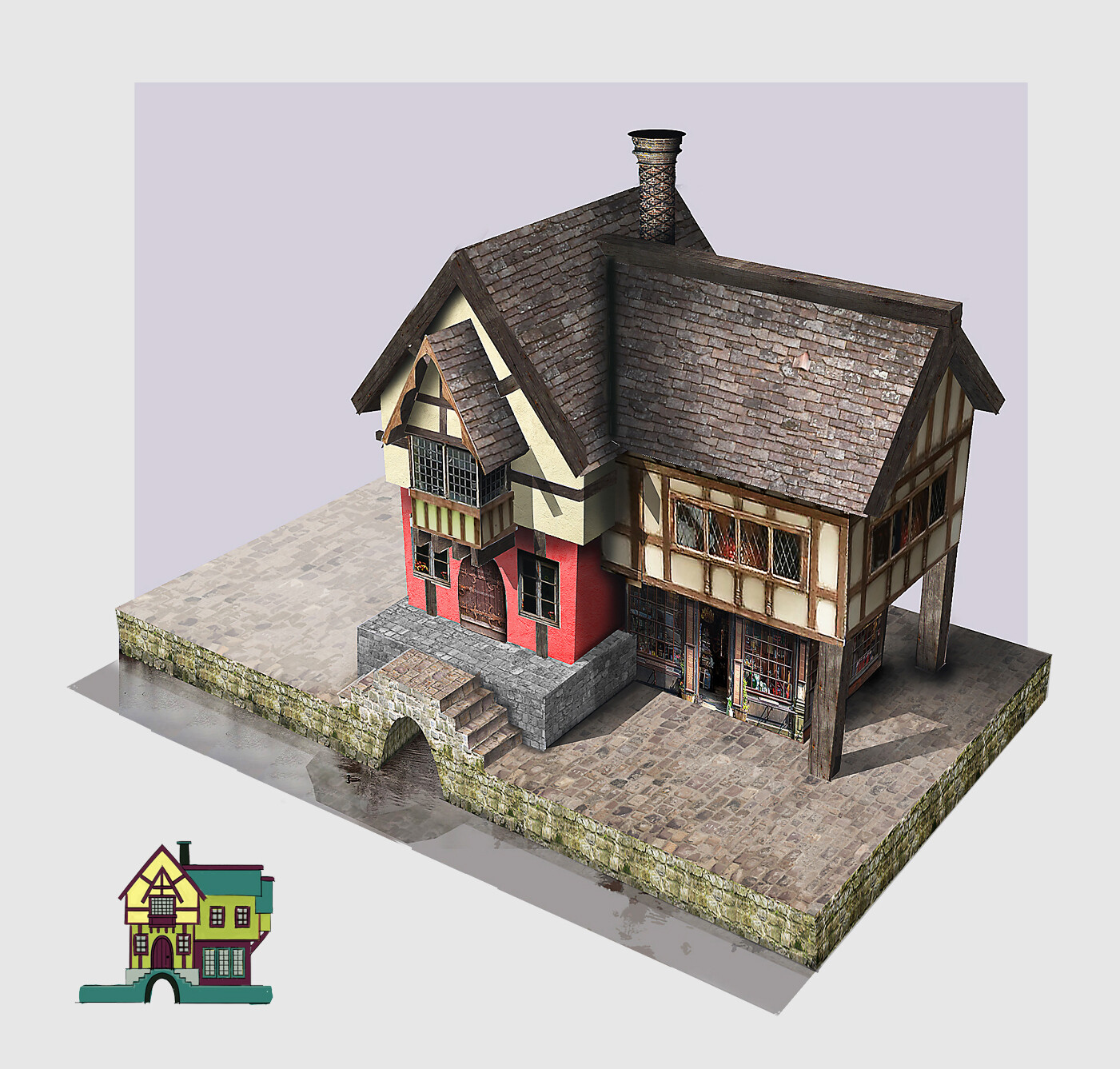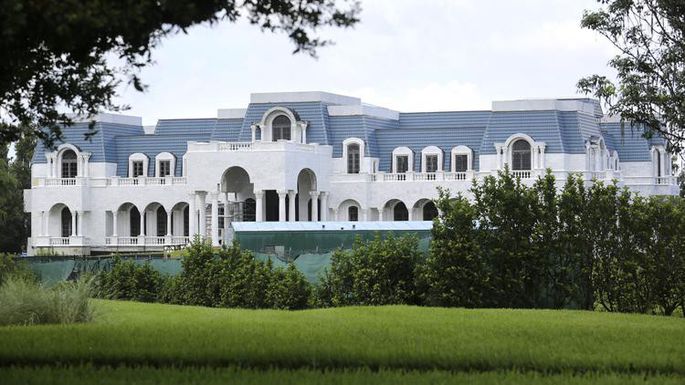Table Of Content

It was a blend of resource availability, architectural innovations, and the prevalent socio-economic dynamics. From the humble abodes of peasants to the grand residences of the nobility, the essence of medieval living was captured within the walls of these dwellings. Hall houses were typically built by wealthier peasants or by the lords of the manor, who would rent them out to their tenants.
See it: Castle house designed by dad to fulfill daughter's dream hits market in Barrington Hills - NBC Chicago
See it: Castle house designed by dad to fulfill daughter's dream hits market in Barrington Hills.
Posted: Tue, 01 Aug 2023 07:00:00 GMT [source]
Discover more from Ultimate guide of Castles, Kings, Knights & more Castrum to Castle
For the first time the public could easily view “exotic” locations and architecture in Europe and elsewhere. “This meant the public could view European architecture, and even more exotic Middle Eastern, Indian, and Egyptian architecture as it really was, not as fancifully interpreted by illustrators,” Gellner says. Straw bales provided excellent insulation and they were very easy to come by after reaping at the end of summer and thus made an excellent choice for the serfs of the land. Sadly, they were also quite flammable, which contributed to their short lifespans. He hall was used for dining, as well as hosting ceremonies and perhaps most importantly, the manorial court. The upper floors of a burgher’s house were occupied by elder children, unmarried female relatives, and the burgher’s parents or guests.
The Basic Building Blocks: Materials in Use
Finally cob houses were and, still are extremely resilient to fire which made them ideal candidates for a long-standing structure. Their roofs were in most cases thatched and in some occasions made of timber or even clay. Due to the plasticity of the material cob-made houses are easily distinguishable by their curvy walls, an architectural style that was used a lot due to its uniqueness.
Memories Last a Lifetime
Every country, even when building a castle according to a specific architectural style, had regional adaptations such as a Germanic influence or a Spanish influence. Yet, as the centuries progressed, there was a marked shift towards prioritizing comfort and privacy in housing. Multi-storied structures with distinct rooms for different purposes, like cooking, sleeping, and socializing, became more common.
Q: What are some architectural features of medieval houses?
Sleeping Beauty’s Castle is based on Neuschwanstein Castle in Bavaria, Germany which was built in the late 1800s. But Fort Oliver was not Oliver’s first attempt at historically elaborated architectural design. Around 1920, Oliver designed the most iconic storybook structure in Los Angeles, now known as the Spadena House—or the Witch’s House, if you’re spooky. Ironically, this light-hearted style sprang out of one of the bloodiest conflicts in the world. “The Great War sent many young American soldiers to Europe for the first time, and many came back charmed by the romantic architecture of rural France and Germany,” Gellner says. Stirling castle was made of masonry stone but the whole of the structure was actually covered with a lime stone plaster, giving to the castle this bright white/yellow colour.
Peasant homes in medieval England
A red collar around its furry neck mimics the red wooden trim framing the window’s exterior. The cat is a resident of what appears to be a slightly sinister, yet charming, medieval cottage. In architecture, flushwork is the decorative combination on the same flat plane of flint and ashlar stone. If the stone projects from a flat flint wall then the term is proudwork, as the stone stands “proud” rather than being “flush” with the wall.

Keep Out! The Viking Wall Against The Empire
They made their houses themselves because they could not afford to pay someone to build them. This medieval cottage from the thirteenth century, has been reconstructed by the Weald and Downland Museum, Sussex, England. It has two rooms, one containing the hearth that would have been the main living area. The scarcity of the timber could add to the cost of building a house in medieval times.
Recognizing this, many countries have made concerted efforts to preserve and restore these historical structures. From regulations that protect them from modern development to initiatives that turn them into museums or heritage sites, there’s a growing appreciation for the value and history these buildings represent. Additionally, the economic prosperity of the Renaissance era meant that more individuals could afford to build or commission grander homes. Merchants and the burgeoning middle class began to construct houses that rivaled those of the nobility in size and grandeur. This transition was not merely about aesthetics; it reflected a broader societal shift.
Lumber was though used in military structures before the introduction of the Norman stone defences. Actually many of the invaders of England brought wooden defensive structures ready to assembly (Like IKEA flat packed but some hundred years ago). Straw buildings like houses and barns were constructed by packing cuboid (rectangular) straw bales and stacking them on top of each other. In most occasions this structure would have been supported by a lightweight wooden frame. The roofs of these houses were also built by using straw and other dry vegetation, these roofs were used across many building types and are commonly known as Thatched roofs. Windows contain stained glass, showing stories from the Bible and from lives of saints.
Animals and storage were often kept in separate out-buildings, while the main structure was often two-story with a bedroom upstairs. The early medieval houses, often simple wooden structures with thatched roofs, were primarily functional, providing basic shelter against the elements. However, as society became more complex and urban centers expanded, the medieval house began to evolve in both form and function. Towns and cities saw the rise of row houses, built closely together with shared walls, maximizing space in burgeoning urban environments.
Wattle and Daub houses were taller and wider than the simple stick and straw houses. They were made by first constructing a framework of timber, then filling in the spaces with wattle (woven twigs). They were also well-insulated, with the thick walls and thatched roofs providing good protection from the cold and damp.
By doing so, we can ensure that the legacy of these structures lives on for future generations to appreciate and learn from. Overall, the preservation and restoration of medieval houses play a crucial role in protecting our cultural heritage and promoting a deeper understanding of our shared history. It is essential to continue investing in these efforts to ensure that future generations can appreciate the charm and historical significance of these timeless structures. Medieval houses played a significant role in the feudal system that dominated Europe from the 9th to the 15th centuries.
Without counting the price of labour, timber for one house could be around 10s. The median figure for a finished house (including telling, preparation and cartage) was around £4. France is home to some of the most beautiful and ornate medieval châteaux in the world. These grand homes were built by wealthy nobles and feature lavish gardens, opulent furnishings, and intricate architectural details. This castle at Disneyland might have been even grander, but Walt Disney worried that anything larger would overwhelm his guests.
It is estimated that it would have taken 10 men 5 months to build a basic structure. Peasants could only build their homes after the agricultural season was complete–October to February–once they’d been paid for their work. Churches were a large part of village life and were the main focus of the life of the community. Biblical stories were performed and put on as plays for the community in the church building. Gothic architecture developed into a graceful, light style with ribbed vaults and pointed arches as opposed to the blunt Romanesque style. Large windows, thin clustered columns, and ornate decorations became the defining elements of the Gothic style.
Small towers were often constructed, primarily to allow guards to get a better view of the countryside. Manor houses could only be fortified if a royal license was granted (known as a license to crenellate) – by obtaining such a license, and fortifying his manor, a lord could also hope to increase his prestige. By the 14th-century manor houses themselves had developed clearly defined plans. In most cases, lords would appoint a steward or seneschal to remain at the manor house and act on their behalf, convening the manorial court as necessary and generally overseeing the smooth running of the fief. The peasants who lived on the land in a manor were granted the right to farm that land by the lord of the manor.
With increased prosperity and the desire for more commodious dwellings, the 16th-century manor house evolved into the Renaissance country house. In England more elaborate buildings were constructed, reflecting a new era of formality. The houses were frequently of regular quadrangular plan, with the hall diminished in size and importance. Later the hall was reduced to the status of an entrance, as at Ramsbury Manor, Wiltshire (c. 1680). The defended tower-house tradition persisted in France throughout the 16th century, generally retaining corner turrets and other defensive archaisms, as in the Tourelles Manor, near Troyes.

No comments:
Post a Comment